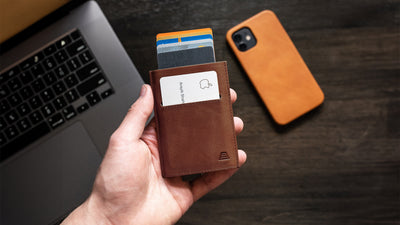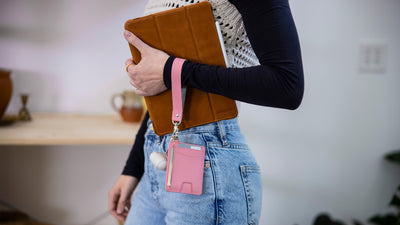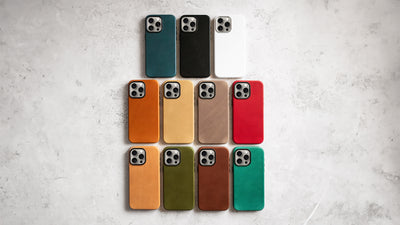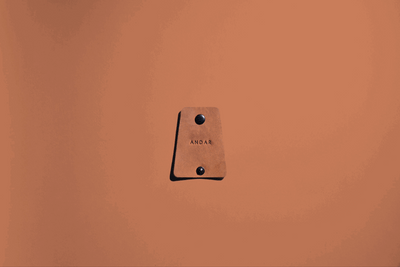The Blog
Leather Grades: How Leather Is Graded
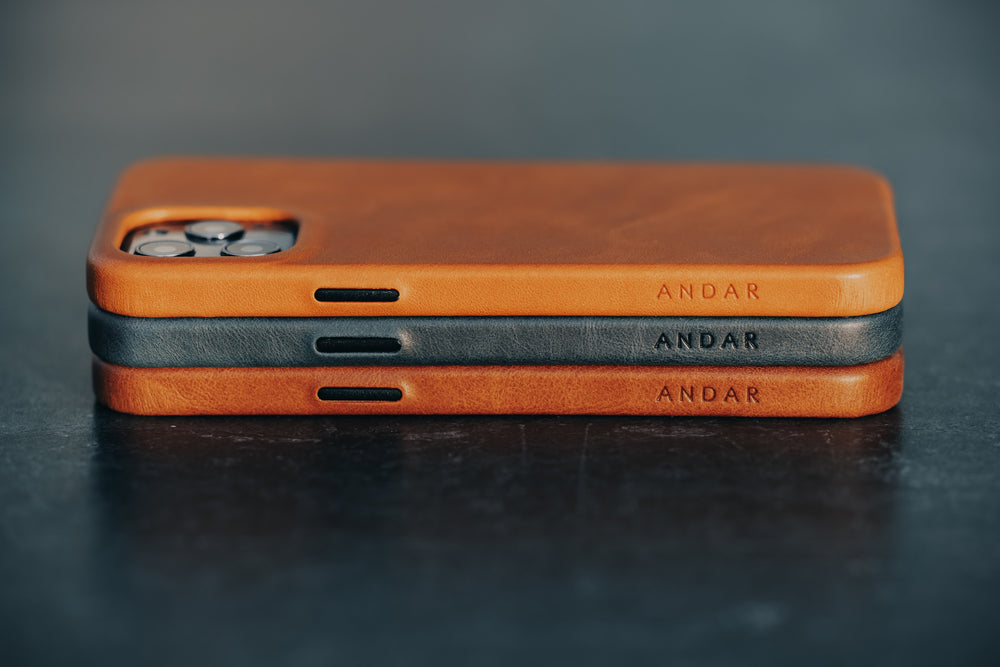
Leather has been around for a long time. Some estimates date back to even over 7,000 years ago. It has a long history, with a beginning shrouded in mystery. There have been hotspots of innovation and high-end leather material craftsmanship, such as Italy, France, and the Western United States. However, the history of leather has been a history that is hard to nail down.
Because its history is hard to nail down, there seems to be a bit of confusion with its processes. This often happens with crafts that are highly technical and important to multiple industries. Especially when it comes to textiles, our knowledge of the processes is usually obscured by the tanneries and selling companies.
We at Andar are here to simplify it all for you. We have spent years devoting our craft to quality products that are synonymous with a beautiful, rich history. We want to share our knowledge of this field with you in the most impactful way, so you can appreciate quality leather as much as we do.
To that end, this article will cover leather grading. Leather grading is usually the same process that gives the leather its many names: full-grain, top-grain, split leather, genuine, bonded, and so many more. We will give a general breakdown of each type that you can use as a guide to everything you need to know about the rich and rewarding world of leather.
Leather Before it Is Leather
Leather generally comes from cowhides. Though some leathers do come from the skins of goats, lamb, or other breeds of cattle, cows are the best quality and most popular choice.
For this guide, we will stick with talking about cowhide (sometimes called rawhide) exclusively. A hide comes from the skin of cows that are generally taken in large, full pieces. Some cowhides come from the meat industry after they have harvested the meat, whereas others are used solely for leather.
The cowhide must undergo a few processes before it is tanned and treated to turn it into high-quality leather. Firstly, the cowhide needs to be separated from the flesh of the animal. Generally, this can be done with a sander or a splitter (which we will talk about shortly). Once this is done, we can get into the real meat (pun massively intended) of the process.
We will go from the bottom of the cowhide to the top to talk about what types of leather come from which areas. Not all leathers follow these rules hard and fast, but this is a good place to start in your understanding of the leather industry and processes.
The Corium
The lowest part of the cowhide is called the corium. The corium is actually a large part of the cowhide thickness-wise, but it is the lowest-quality portion. This is generally what genuine leather and split-grain leather is made out of. This section includes corrected grain leather that has been stripped of its natural imperfections. Result: no grain. While it is still real leather, it is less durable.
Leathers made from corium will have no natural grain and cannot withstand the wear and tear that other leathers can.
How the Corium Is Obtained
Generally, leather makers will use “The Splitter” (for all the innovations of the leather industry, naming has never been its forte) to separate the corium from the grain of the cowhide.
What it does is takes the corium wall (which separates the corium from grain) and runs an extremely sharp and fast-moving blade in between the two parts to split them. The corium wall is then sanded off of the top of the corium, and what is left is pure corium.
Split-Grain
From here, the corium can be turned into several different grades of leather, but the highest quality amongst the corium leathers is definitely split-grain leather. This will not have the grain at all but is still a quality leather item. In addition, split-grain will generally be turned into suede.
Since it is not nearly as aesthetically pleasing, suede offers a new life for this part of the cowhide without compromising the integrity of the entire piece. Suede is known to be very soft, so it is popular with jackets and boots.
Genuine Leather
The most common type of leather is, unfortunately, the lowest quality leather of all the real leathers. Genuine leather takes the corium and treats it with several layers of plastic (or PU) coats to artificially create a faux-grain in technically real leather. Generally, the piece of corium is not kept together but is split up and sometimes even ground up to create the necessary size and shape. Much of the furniture upholstery you sit on is made from this kind of leather.
It is useful in its own way, but genuine leather is the most distorted form of real leather. The name genuine is definitely a misleading marketing tactic that you should watch out for when searching for the right leather goods.
This is also where any part of real leather that might be contained in a mostly plastic/ polyurethane (or PU) leather item is taken from (like latex). This is not seriously considered authentic leather.
The Grain
The grain is where top-of-the-line leather comes from. This is traditionally the only leather available and the reason leather has taken on such esteem in the world of textiles. Once the corium is split off, the grain also has to have a little bit of sanding off of the corium wall.
From there, it is turned into either full grain or top grain leather.
Full Grain Leather
Full-grain leather is the highest quality leather that the world has to offer. It is the very top cut of the cowhide and leaves the full grain intact (hence the name). All it has done to it is some tanning so that the fibers are exceptionally strong.
The pores of the full-grain leather piece will stay open to absorb oils, moisture, and heat. All the natural blemishes and marks that the cowhide has gone through in the course of its life will appear in the full-grain leather.
This is the best, most useful, and beautiful leather. We love the idea that the unique qualities of the animal should show through to produce individuality and character. This leather will develop the most beautiful patina with wear as well because of the unchanged and unaltered grain that is still in the piece. We believe that high-end products like a handbag, wallet, or phone case should be crafted from full-grain leather.
Our line of leather products shows the vast potential of the highest grade leather. It is not reserved for use only in ivory towers but can be used every day in any line of work or as an integral part of everyday life. This is what we have committed ourselves to and what we hope you can enjoy as well.
Top Grain Leather
Top grain leather is also sourced from the grain portion of the cowhide but undergoes a few more processes to take out any natural blemishes and give the leather a smoother overall feel. It also sometimes dyes and colors the cowhide to the desired hue.
While this is still higher quality, there is some loss of supple feel in the process. In addition, it cannot take on nearly as beautiful a patina as full-grain leather because its pores are closed in the process of dying the leather (the pigmentation process). This leather does appeal to those who value a uniform look, but it misses out on the beauty of natural leather.
“The Others”
Any leather outside of any of these designations is generally going to be faux leather. While there are other subcategories, any leather manufacturer will try to identify itself within any of these categories to draw the attention of buyers since these names are relatively well-known.
PU leather, bonded leather (made of leather dust, vinyl, glue, and leather scraps), and anything else that does not designate itself is a mixture of chemicals primarily, and most importantly, not leather.
How To Tell What Grade You Have
One of the most common questions is whether the leather you have bought is top-grain, full-grain, genuine, etc. Generally, you should know what you are buying, but if you do not, do not worry.
Leather companies are required by law to place a small identifying mark on leather to tell you what type of leather you have. Simply look around the piece on the inside or underside until you find a small stamp telling you what type of leather you have.
Leather Grading Is Easy
Once you know the process behind making different types of leather, identifying what type you have on your hands becomes a bit easier as well. Like with anything, the more research you do, the more you can make sure you are buying the best of the best.
So, if you are looking for corium leather, know that both genuine, split, and (therefore) suede are all real corium. Top grain and full grain are grain leathers and are of the highest quality. Go forward into the leather marketplace with no fear!
Sources:
leather | History & Facts | Britannica.
Global Leather Goods Market Size Report, 2021-2028 | Grand View Research.
Leather Guides | FTC